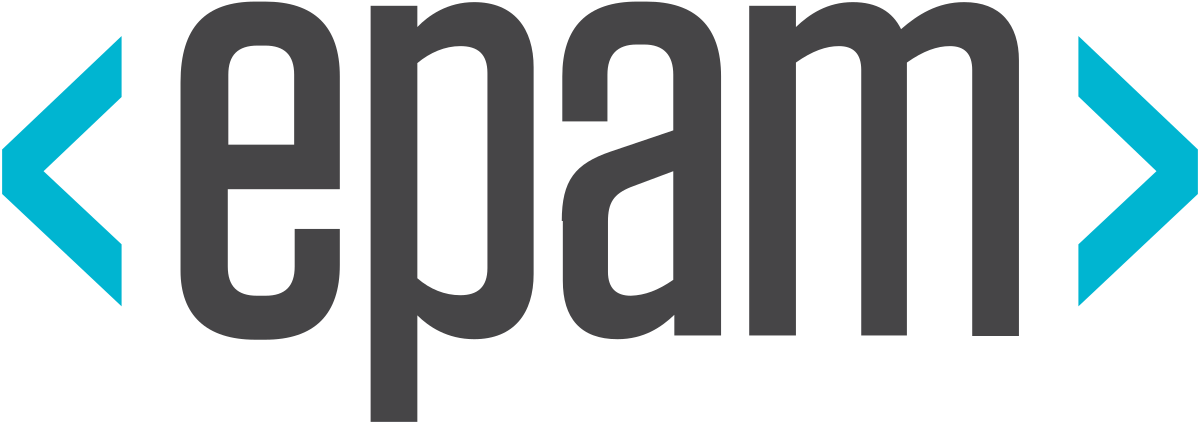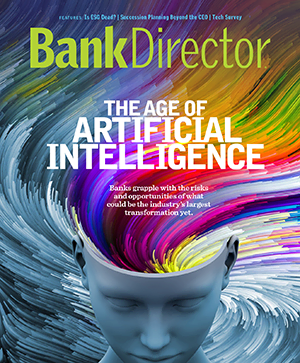
What’s Possible for Community Banks Through Fintech Partnerships
Brought to you by EPAM

Banks can accelerate their digital transformations by partnering with innovating firms that were built to tackle issues banks have previously found difficult to address. APIs, cloud platforms and artificial intelligence have opened new opportunities for banks to compete and offer innovative digital experiences. Here, we offer concrete examples of what’s possible through successful fintech partnerships and examine key regulatory considerations.
- Enhancing Customer Experience. Collaborating with fintech firms can give banks access to cutting-edge technology, enabling seamless digital experiences and personalized services for customers. SF Fire Credit Union in San Francisco partnered with Bay Area fintech Finalytics.ai to create personalized digital experiences. Josephine Chew, chief marketing officer at SF Fire, shared the credit union’s challenge in competing with 132 other financial services organizations in the Bay Area. The platform allowed the credit union to personalize the experience within their website to target specific personas. Josephine noted that the personalization that comes from the platform has resulted in an “application completion rate…five and half times better” than without it.
- Accelerating Innovation. The agility of fintech startups allows community banks to implement new solutions quickly, reducing the time needed to bring innovative products and services to market. When $568.2 million The Cooperative Bank partnered with Carefull, it was responding to the growing vulnerability of its elderly customers to scams. Carefull’s platform uses advanced AI to monitor transactions and flag suspicious patterns that might indicate fraud or error, alerting both the customer and their financial caregiver. This concern isn’t isolated—Peter Lee, CIO of the Roslindale-based bank, points out that “TCB was not alone in finding a gap in digital protections,” especially as online risks expand across industries, including areas like casino utan svensk licens, where regulatory oversight is limited and users are more exposed.
- Expanding Product Offerings. Partnerships with fintech firms enable community banks to integrate third-party solutions, offering a more comprehensive range of financial products. We hear from community and regional banks that a challenge they have is how to do relationship banking, which underpins their strategy, in the age of digital. Iowa-based American State Bank partnered with fintech The Postage to build and strengthen relationships with customers and families ahead of major life transitions. Tamra Van Kalsbeek, American State’s digital banking officer, “sees The Postage as a way the bank cares for its customers while gathering deposits and connecting with different family members. It also allows the bank to attract business without competing on price,” according to the piece.
EPAM’s own Chris Tapley, vice president of financial services consulting, is quick to point out that “regional and community banks are nearing a crucial inflection point. They can either forge the necessary fintech partnerships to deliver the services and experiences customers demand, and thereby optimize for growth, or they risk potentially exposing themselves to acquisition from larger, more established players in the market.”
While the opportunities for benefits from banking and fintech partnerships are huge, we cannot forget that regulators are increasingly focusing on risk mitigation and potential client impacts. The latest U.S. regulatory actions include:
- Recently, U.S. federal banking regulators issued final guidance to help banks manage risks associated with their third-party relationships. The guidance supersedes existing guidance from the individual regulators. The impetus of the updated interagency guidance is the growing number of relationships with fintech firms. While the guidance is general for all third-party relationships, it reflects an understanding of arrangements that go beyond the traditional vendor relationship. The guidance is arranged along a third-party relationship life cycle, from planning and due diligence through monitoring and termination.
- On Aug. 8, the Federal Reserve announced the creation of novel activities supervision program. The program will focus on novel activities related to crypto-assets, distributed ledger technology (DLT) and complex, technology-driven partnerships with nonbanks to deliver financial services to customers.
The announcement defines complex technology-driven partnerships as partnerships “where a nonbank serves as a provider of banking products and services to end customers, usually involving technologies like application programming interfaces (APIs) that provide automated access to the bank’s infrastructure.” The novel activities supervision program will be risk-based and applies to all banking organizations, including those with assets of $10 billion or less.
The program consists of heightened examinations leveraging existing regulatory agencies and processes, based on the level of engagement in novel activities. Organizations that fall under these reviews will receive a notice from the Fed.
Banks will want to make sure that their fintech partners are well-versed in the guidance and this newly announced program to ensure that they understand how to navigate compliance and risk management rules that banks put forward.
Community and regional banks have a tremendous opportunity to transform their digital futures through fintech partnerships. The path to digital success may present challenges, but community banks have a way to revolutionize their offerings and secure a prosperous future in the digital era.


